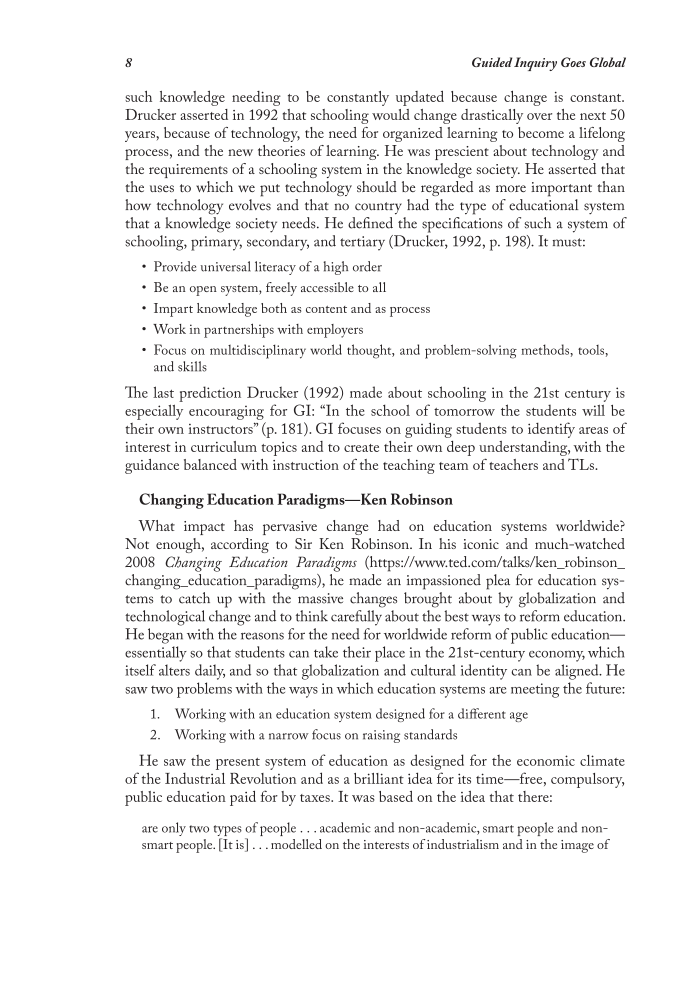8 Guided Inquiry Goes Global such knowledge needing to be constantly updated because change is constant. Drucker asserted in 1992 that schooling would change drastically over the next 50 years, because of technology, the need for organized learning to become a lifelong process, and the new theories of learning. He was prescient about technology and the requirements of a schooling system in the knowledge society. He asserted that the uses to which we put technology should be regarded as more important than how technology evolves and that no country had the type of educational system that a knowledge society needs. He defined the specifications of such a system of schooling, primary, secondary, and tertiary (Drucker, 1992, p. 198). It must: • Provide universal literacy of a high order • Be an open system, freely accessible to all • Impart knowledge both as content and as process • Work in partnerships with employers • Focus on multidisciplinary world thought, and problem-solving methods, tools, and skills The last prediction Drucker (1992) made about schooling in the 21st century is especially encouraging for GI: “In the school of tomorrow the students will be their own instructors” (p. 181). GI focuses on guiding students to identify areas of interest in curriculum topics and to create their own deep understanding, with the guidance balanced with instruction of the teaching team of teachers and TLs. Changing Education Paradigms—Ken Robinson What impact has pervasive change had on education systems worldwide? Not enough, according to Sir Ken Robinson. In his iconic and much-watched 2008 Changing Education Paradigms (https://www.ted.com/talks/ken_robinson_ changing_education_paradigms), he made an impassioned plea for education sys- tems to catch up with the massive changes brought about by globalization and technological change and to think carefully about the best ways to reform education. He began with the reasons for the need for worldwide reform of public education— essentially so that students can take their place in the 21st-century economy, which itself alters daily, and so that globalization and cultural identity can be aligned. He saw two problems with the ways in which education systems are meeting the future: 1. Working with an education system designed for a different age 2. Working with a narrow focus on raising standards He saw the present system of education as designed for the economic climate of the Industrial Revolution and as a brilliant idea for its time—free, compulsory, public education paid for by taxes. It was based on the idea that there: are only two types of people . . . academic and non-academic, smart people and non- smart people. [It is] . . . modelled on the interests of industrialism and in the image of
Document Details My Account Print multiple pages
Print
You have printed 0 times in the last 24 hours.
Your print count will reset on at .
You may print 0 more time(s) before then.
You may print a maximum of 0 pages at a time.
























































































































































